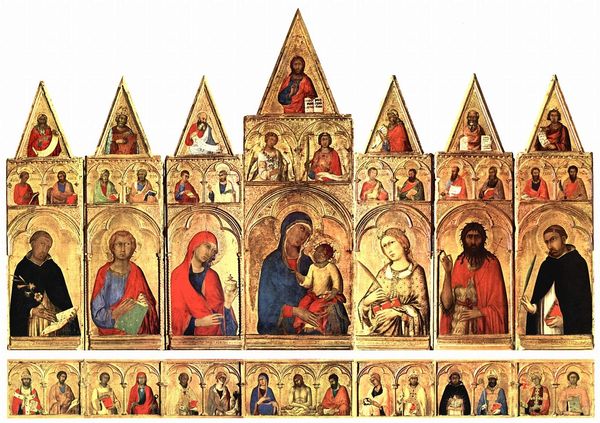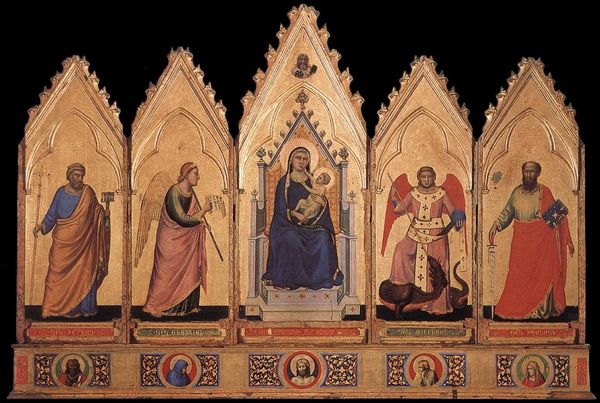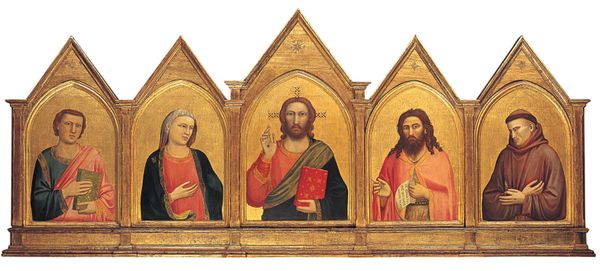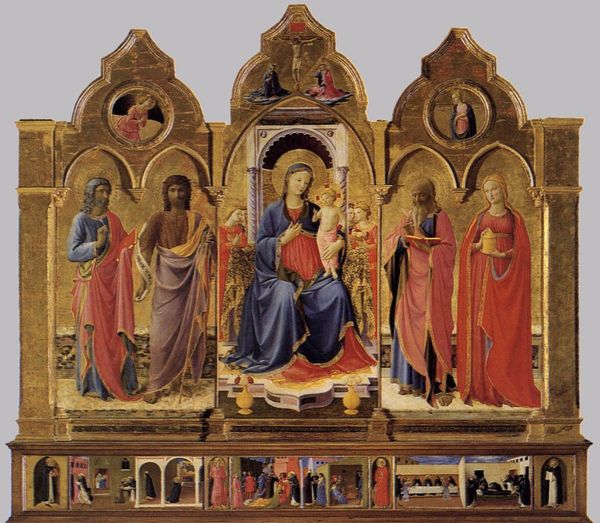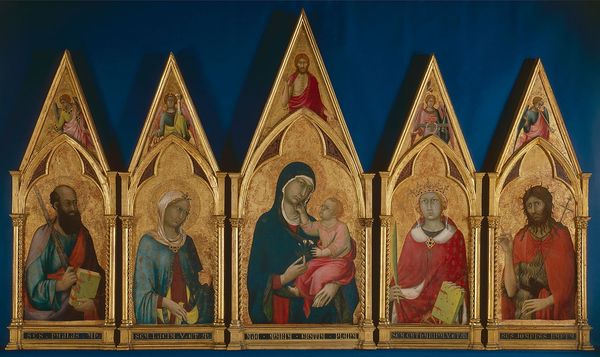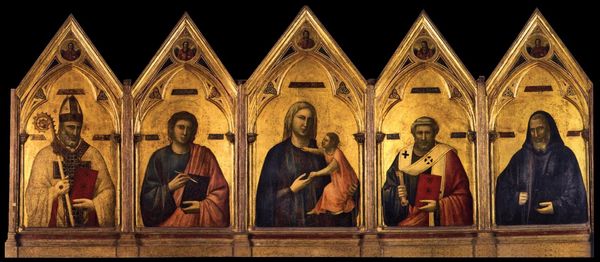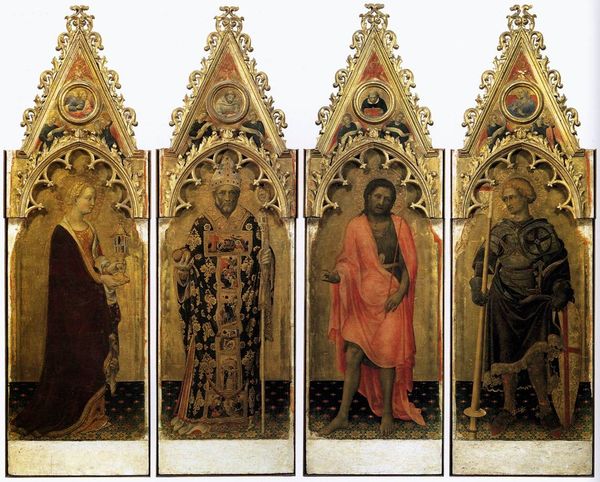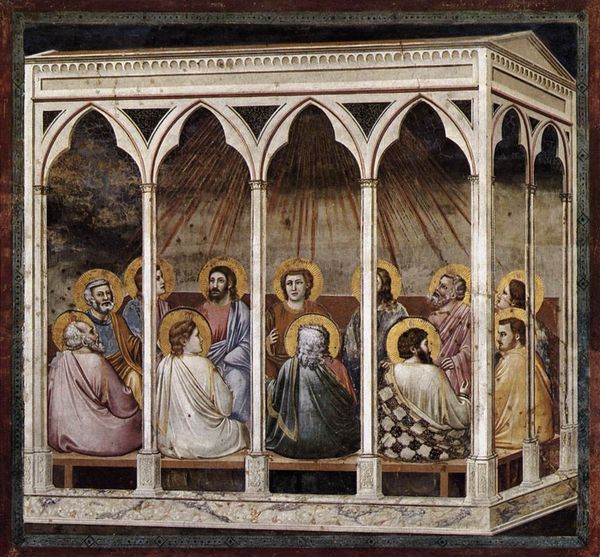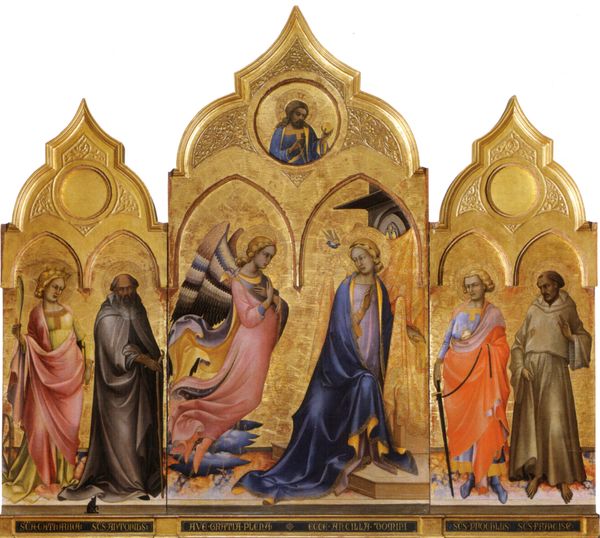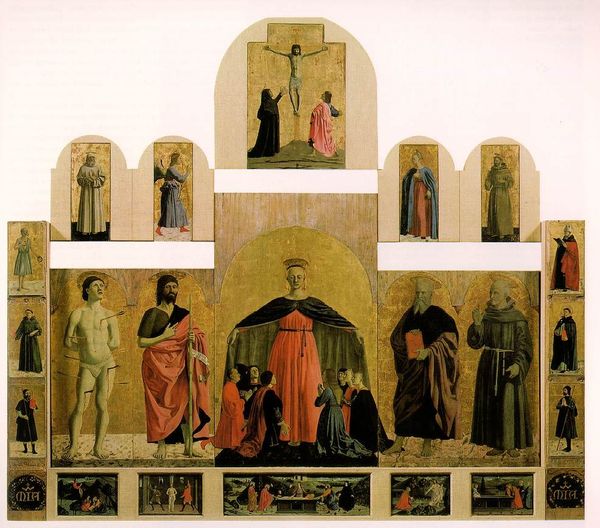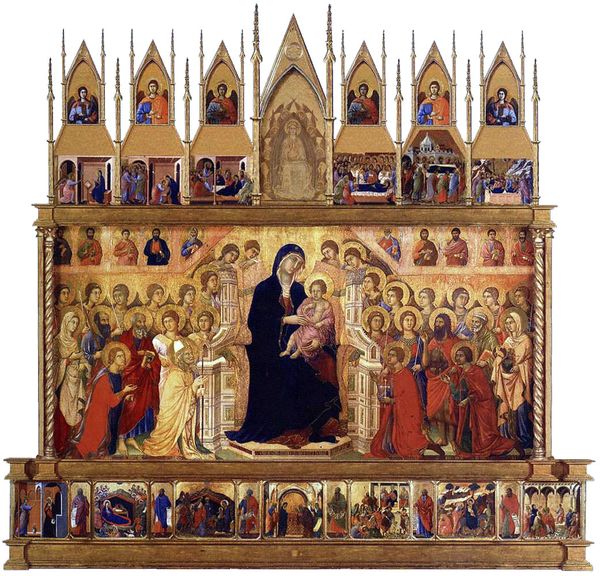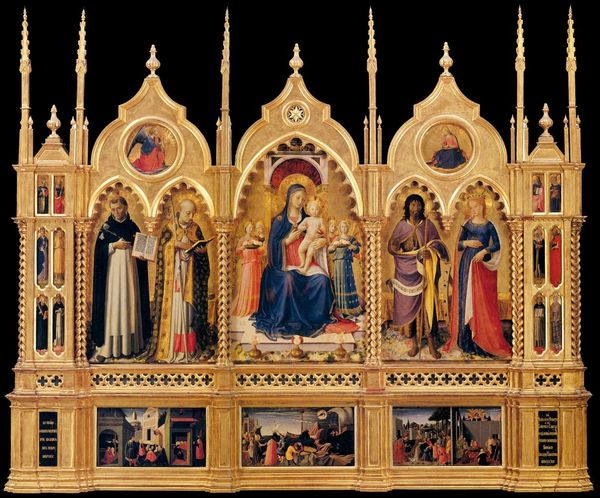
panel, tempera, painting
#
portrait
#
medieval
#
panel
#
tempera
#
painting
#
sculpture
#
sienese-school
#
figuration
#
historic architecture
#
christianity
#
history-painting
#
italian-renaissance
#
virgin-mary
#
christ
Copyright: Public domain
Duccio painted 'The Madonna and Child with Saints' around the early 14th century, using tempera and gold on wood. The eye is immediately drawn to the intricate, symmetrical composition. Saints and angels flank the Virgin and Child in a rigid, hierarchical order, while the heavy use of gold leaf creates a shimmering, otherworldly effect. The formality of the arrangement reflects a structured cosmos. Each figure is carefully placed within an architectural framework, indicating a divine order. The colour symbolism is essential: gold signifies divinity, while the varying colours of the saints' robes denote their status. Consider the semiotic weight of each element. The Madonna's central position underscores her role as the mother of God, her gaze directed towards the viewer, engaging us in a dialogue of faith. The linearity and flattening of space, common in Byzantine-influenced art, emphasize the spiritual over the naturalistic. Ultimately, it’s the interplay between this formal structure and the subtle emotional expressions that reveals the complex layers of meaning. The painting thus functions as a meditation on hierarchy, faith, and the relationship between the earthly and divine realms.
Comments
No comments
Be the first to comment and join the conversation on the ultimate creative platform.
